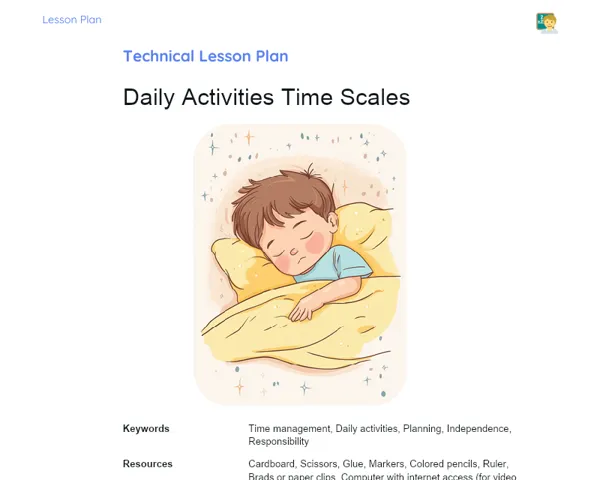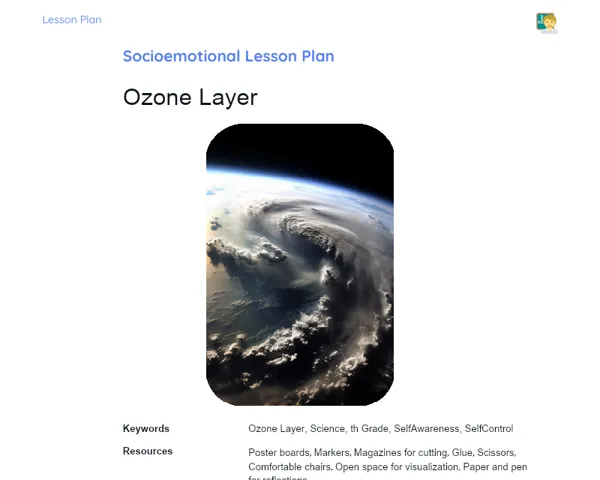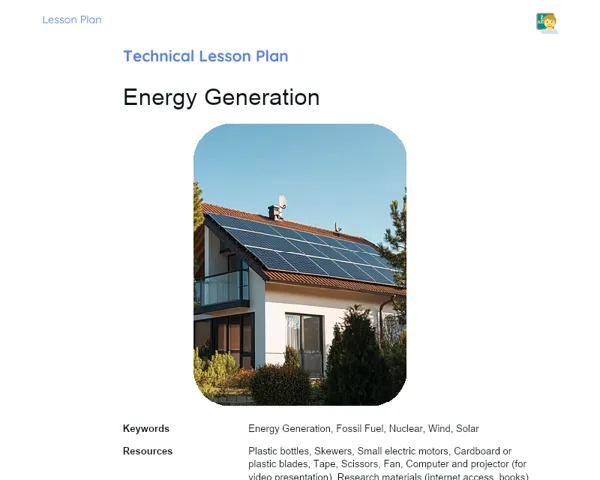Lesson Plan | Lesson Plan Iteratif Teachy | Chemical Bonds: Ionic and Covalent
| Keywords | Chemical Bonds, Ionic Bonds, Covalent Bonds, Chemical Compounds, NaCl, H2O, Digital Methodology, Social Media, Practical Activities, Educational Technology, Collaborative Learning, Interactive Quizzes, WebQuest, Online Research |
| Resources | Mobile phones with internet access, Computers or tablets, Access to social media platforms (Instagram, TikTok, etc.), Quiz creation platforms (Kahoot, Quizizz, etc.), Platforms for creating websites/blogs (Google Sites, Wix, Blogger, etc.), Projector or screen for presentations, Materials for note-taking (notebooks, pens, etc.) |
| Codes | - |
| Grade | 9th grade |
| Discipline | Sciences |
Goal
Duration: 10 - 15 minutes
This stage aims to ensure that students grasp the learning objectives for the lesson, giving them a clear expectation of what they should achieve by the end of the session. This clarity fosters better engagement in practical activities and helps them connect their existing knowledge with the new content they will explore digitally.
Goal Utama:
1. Understand the nature of covalent and ionic bonds, identifying their characteristics and differences.
2. Identify ionic and covalent compounds, highlighting examples like NaCl as an ionic compound and H2O as a covalent compound.
Goal Sekunder:
- Encourage collaboration during digital activities.
- Promote the use of technological tools for researching and presenting chemical concepts.
Introduction
Duration: 10 - 15 minutes
This stage aims to engage students right away by utilizing technology they are comfortable with, igniting curiosity about the topic. It creates a collaborative and interactive environment, gearing their minds for the next lesson phase where they will explore and apply the concepts of chemical bonds more practically.
Warming Up
Inform students that chemical bonds are critical for forming the substances we encounter daily. Ionic and covalent bonds are two fundamental ways atoms combine to create compounds. Encourage them to use their mobile phones to discover an interesting fact about these bonds and share it with the class.
Initial Thoughts
1. What are the main characteristics of ionic and covalent bonds?
2. Can you give examples of compounds with ionic bonds and those with covalent bonds?
3. Why are chemical bonds important for the formation of substances?
4. How does each bond type affect the properties of the compounds formed?
Development
Duration: 70 - 80 minutes
This stage aims to empower students to apply and consolidate their understanding of ionic and covalent bonds in a hands-on and engaging way, using modern digital tools embedded in their daily lives. The activities encourage collaboration, creativity, and effective technology use for educational purposes.
Activity Suggestions
Activity Recommendations
Activity 1 - 🤖 Chemistry Mission on Social Media
> Duration: 60 - 70 minutes
- Goal: Utilize modern digital skills to enhance understanding and communication about the topic of chemical bonds in a dynamic and creative manner.
- Deskripsi Activity: Students will act as digital influencers tasked with creating informative posts on their social media (Instagram, TikTok, etc.) about the differences between ionic and covalent bonds. They will use videos, images, and creative stories to engage their audience.
- Instructions:
-
Divide the class into groups of up to 5 students.
-
Each group should select a social media platform (Instagram, TikTok, etc.) for their content creation.
-
Groups will use their mobile phones to research additional information and create multimedia content (videos, images, stories) explaining the differences between ionic and covalent bonds.
-
Suggested tips: include examples like NaCl for ionic bonds and H2O for covalent bonds, and consider using animations or dramatizations where possible.
-
Groups should post their content on a social media account created specifically for this activity (these can be fictitious or real, based on school guidelines).
-
Each group will present their content to the class, explaining the thought process behind their material.
Activity 2 - 🎮 Chemical Bonds: The Interactive Game
> Duration: 60 - 70 minutes
- Goal: Foster collaborative and competitive learning, promoting the review and solidification of concepts related to chemical bonds in a playful manner.
- Deskripsi Activity: Create an interactive game using an online platform (like Kahoot or Quizizz) where students craft and participate in quizzes related to ionic and covalent bonds. The objective is for students to enjoy learning in a fun, competitive atmosphere.
- Instructions:
-
Divide the class into groups of up to 5 students.
-
Each group should use an online quiz platform (Kahoot, Quizizz, etc.) to create their interactive quiz focusing on ionic and covalent bonds.
-
The quiz should have questions regarding the characteristics and examples of each bond type.
-
Students are encouraged to include multimedia resources such as images and videos to enhance the questions and answers.
-
Once all groups create their quizzes, everyone will participate in quizzes made by the other groups.
-
Groups should discuss the questions they struggled with and review the correct answers.
Activity 3 - 📚 Chemistry Investigation: WebQuest
> Duration: 60 - 70 minutes
- Goal: Cultivate research and digital communication skills while deepening knowledge about chemical bonds in an investigative and collaborative manner.
- Deskripsi Activity: Students will engage in a WebQuest, an online investigative activity where they need to gather and compile information about ionic and covalent bonds, presenting it as a website or blog at the end.
- Instructions:
-
Divide the class into groups of up to 5 students.
-
Each group will be given a list of questions and topics they need to investigate concerning ionic and covalent bonds.
-
Using their mobile phones and/or computers, groups must research the information to answer the given questions.
-
Groups should compile their findings into a website or blog using platforms like Google Sites, Wix, or Blogger.
-
The websites/blogs should have clear sections explaining what ionic and covalent bonds are, their main characteristics, examples of compounds, and their significance.
-
Each group will present their website/blog to the class, detailing how they organized their information and the digital tools they utilized.
Feedback
Duration: 15 - 20 minutes
This stage aims to encourage students to reflect on their learnings, sharing conclusions with others and receiving constructive feedback. It promotes knowledge consolidation through interaction and helps develop interpersonal and self-evaluative skills.
Group Discussion
Facilitate a discussion among all students where groups share their learnings from the activities and their conclusions. To prompt the discussion, you could say: 'Let's share our findings about chemical bonds. Each group will get a chance to discuss their experiences and conclusions. Begin by briefly describing the process you followed to create the digital content or quiz. What stood out to you the most during the research and implementation phases?'
Reflections
1. What were the main discoveries about ionic and covalent bonds during the activities? 2. How did using social media or digital platforms enhance your understanding of chemical bonds? 3. What changes could you make to improve the clarity and appeal of your explanations regarding ionic and covalent bonds?
Feedback 360º
Instruct students to engage in a 360° feedback session where each person will receive feedback from their group mates. Guide the class to ensure the feedback is constructive and respectful. You could say: 'We will proceed with a 360° feedback session. Each student will mention something impressive they noticed about their peer’s work and something that they think could be better. Remember to focus on being respectful and constructive to help everyone improve.'
Conclusion
Duration: 10 - 15 minutes
This stage is focused on consolidating learning and linking concepts explored during the lesson to real-world applications. This moment of reflection and understanding is crucial for students to appreciate the relevance of the content and be motivated to apply what they've learnt in everyday contexts, guiding them to translate knowledge into actionable steps.
Summary
🎉 Congratulations, Young Chemists! 🎉 Today, you delved into the intriguing world of chemical bonds! 🌍 You learned that ionic bonds involve the transfer of electrons, resulting in positively and negatively charged ions, as seen in NaCl 🧂, while covalent bonds entail the sharing of electrons, exemplified by H2O 💧. Through hands-on activities on social media, interactive games, and investigative research, you've become genuine chemistry specialists! 👩🔬👨🔬
World
🔗 Chemical bonds form the very foundation that holds the world around us together! In our modern context, understanding these bonds enables us to grasp everything from our smartphone designs 📱 to the reactions happening in our kitchens 🍲. Being able to convey these concepts creatively and digitally is key in a time when science and technology are increasingly intertwined. 🌐
Applications
🧪 Chemical bonds play a vital role in our daily lives. From the butter we spread on toast 🥖 to powering our electronic devices with batteries 🔋, everything relies on these atomic interactions. A solid grasp of these concepts not only provides a robust foundation in science but also opens avenues for technological advances and solutions to real-world challenges. 🚀



